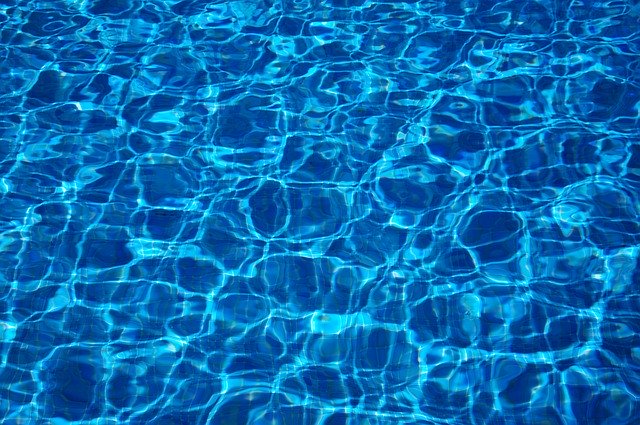With spring here, and so many of us isolating at home amid the Coronavirus lockdown many people will be looking to open their swimming pools for a source of relaxation, exercise and enjoyment.
But is it safe to share your home swimming pool? Does chlorine, bromine etc.. kill Coronavirus / Covid 19?
According to CDC (Centers for Disease Control and Prevention):
“There is no evidence that COVID-19 can be spread to humans through the use of pools and hot tubs. Proper operation, maintenance, and disinfection (e.g., with chlorine and bromine) of pools and hot tubs should remove or inactivate the virus that causes COVID-19.”
Of course, you should still consider keeping distance between one another if you can, around 6ft. It’s also not a bad idea to shower before you get in the swimming pool to keep the pool as sanitized as possible and give the chemicals the best chance to do their job.
CDC officials say this coronavirus is thought to spread mainly from person-to-person. It spreads between people who are in close contact (within about 6 feet) with one another and through respiratory droplets produced when an infected person coughs or sneezes, according to the CDC.
Those who are unwell or suspect they may have Coronavirus should refrain from swimming if others are to use the same pool.
As always you should check your pool chemicals regularly to ensure that your swimming pool remains healthy.
| Parameter | Min | Ideal | Max | Pool Type |
|---|---|---|---|---|
| Parameter: Free Chlorine (ppm or mg/L) | Min: 1.0 | Ideal: 2.0 – 4.0 | Max: 5.0 | Pool Type: Pools, Waterparks |
| Parameter: Free Chlorine (ppm or mg/L) | Min: 2.0 | Ideal: 3.0 – 5.0 | Max: 10.0 | Pool Type: Spas |
| Parameter: Combined Chlorine (ppm or mg/L) | Min: 0 | Ideal: 0 | Max: 0.4 | Pool Type: Pools, Waterparks |
| Parameter: Combined Chlorine (ppm or mg/L) | Min: 0 | Ideal: 0 | Max: 0.5 | Pool Type: Spas |
| Parameter: Total Bromine (ppm or mg/L) | Min: 2.0 | Ideal: 4.0 – 6.0 | Max: 10.0 | Pool Type: All Types |
| Parameter: PHMB (ppm or mg/L) | Min: 30 | Ideal: 30 – 50 | Max: 50 | Pool Type: All Types |
| Parameter: ph | Min: 7.2 | Ideal: 7.4 – 7.6 | Max: 7.8 | Pool Type: All Types |
| Parameter: Total Alkalinity as CaCO3 (ppm or mg/L) | Min: 60 | Ideal: 80 – 100* 100 – 120** |
Max: 180 | Pool Type: All Types |
| Parameter: Total Dissolved Solids (ppm or mg/L) | Min: NA | Ideal: NA | Max: 1500 over start-up | Pool Type: All Types |
| Parameter: Calcium Hardness as CaCO3 (ppm or mg/L) | Min: 150 | Ideal: 200 – 400 | Max: 1,000 | Pool Type: Pools, Waterparks |
| Parameter: Calcium Hardness as CaCO3 (ppm or mg/L) | Min: 100 | Ideal: 150 – 250 | Max: 800 | Pool Type: Spas |
| Parameter: Heavy Metals (ppm or mg/L) | Min: None | Ideal: None | Max: None | Pool Type: All Types |
| Parameter: Visible Algae | Min: None | Ideal: None | Max: None | Pool Type: All Types |
| Parameter: Bacteria | Min: None | Ideal: None | Max: Local Code | Pool Type: All Types |
| Parameter: Cyanuric Acid (ppm or mg/L) | Min: **** | Ideal: 30 – 50 | Max: **** | Pool Type: All Types |
| Parameter: Temperature °F/°C | Min: 78°F (25.5°C) |
Ideal: 80.5°F (26.9°C) |
Max: 82°F (27.8°C) |
Pool Type: Competition Pools |
| Parameter: Temperature °F/°C | Min: – | Ideal: – | Max: 104°F | Pool Type: Spas |
| Parameter: Temperature °F/°C | Min: – | Ideal: Personal Preference | Max: 104°F | Pool Type: Other Pools |
| Parameter: Ozone (ppm or mg/L) | Min: – | Ideal: – | Max: 0.1 over 8-hr. time wtd. avg. | Pool Type: All Types |
| Parameter: ORP | Min: Calibrate to Disinfectant Level **** | Ideal: Calibrate to Disinfectant Level **** | Max: Calibrate to Disinfectant Level **** | Pool Type: All Types |
| * | For calcium hyphchlorite, lithium hypochlorite, or sodium hypochlorite |
| ** | For sodium dichlor, trichlor, chlorine, gas, BCDMH |
| *** | Start-up includes the TDS contribution of salt found in chlorine generating systems |
| **** | Dictated by local codes. Typically 100 ppm(mg/L). (Some codes are higher, some are lower) |
| ***** | Some local codes may dictate a minimum and maximum |
© National Swimming Pool Foundation 2017
You can help to keep your swimming pool clean and safe to use with regular cleaning from a local swimming pool contractor. In most cases, your pool contractor will not require any contact with you. Like many other contractors, this is true for Aqua Pro Pool & Spa Service who often turn up at customers home’s to clean their pools while they’re out.

